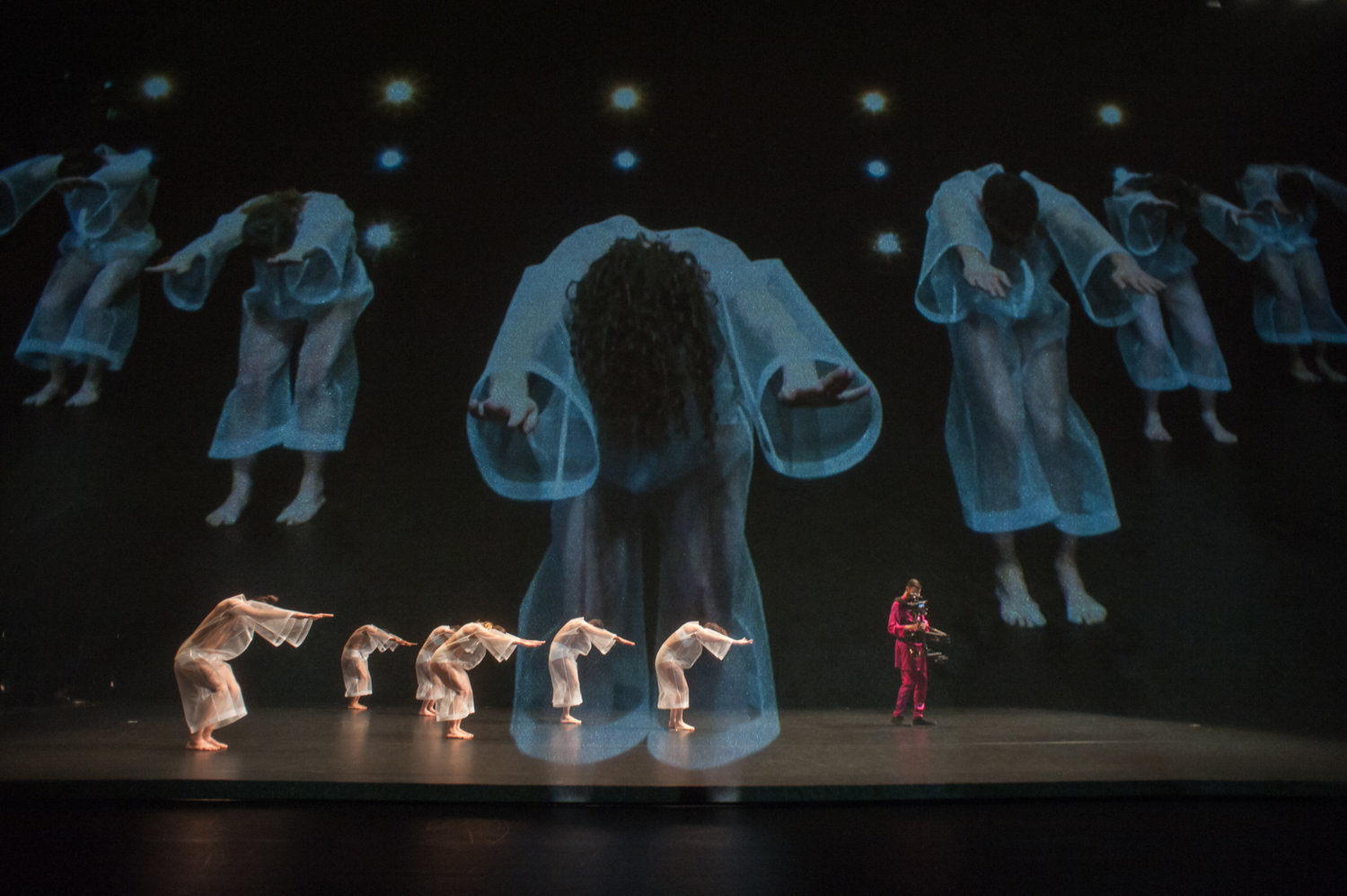Photo Credit: Mick Bello
Merce Cunningham was one of the greatest choreographers of the 21 st century, and I was fortunate to intern at his company over a decade ago during my college years in New York. I vividly remember browsing through various archives in the west village basement office and coming across Charles Atlas and his dance videos with Merce for the first time. They had been collaborators since the 1970’s and both were pioneers and equally interested in exploring the boundaries between technology and the body, and developed new ways of seeing.
I was fortunate to experience Charles Atlas’ work again in person at REDCAT this past week. “Tesseract”was created along with two dancers from the Cunningham troupe, Rashaun Mitchell and Silas Riener, and it not only lived on in Merce’s spirit, but broke exciting new ground.
For a Greek etymology refresher, “Tesseract” means four rays of light, and is essentially a four-
dimensional shape made up of two combined parallel cubes. The performance itself, just like the title was also a combination of two parts: a 3D film of a dance performance, followed by a 3D dance performance which was filmed.
The 45-minute dance film was further broken down into six parts, with geometric squares represented through costumes, set pieces and movement. The play with dimensionality was inherent throughout as the performers were at moments trapped within the canvas, like particles or pixels confined to a matrix inside a frame, but at times they were liberated and operated outside as though in parallel universes. The science-fiction worlds evolved both in shape and color, beginning with simple lines in black and white, moving towards more multifaceted perspectives and angles painted in a rich kaleidoscopic spectrum. The electronic ambient soundscapes and minimal melodies were transporting. I was so fully immersed in the 3D film that I had forgotten about the plastic glasses which separated me from this new universe. One of my favorite scenes was a surreal Martian-like landscape where the dancers donned bright-orange leotards with protruding geometric growths, while also carrying large Platonic solids around. I could not help but wonder about the mathematical elegance that underlies our metaphysical
reality.
Photo Credit: Mick Bello
Atlas’ camerawork pulled us into absorbing journey. He began with more static and fixed shots in the opening of the film which framed the dancers’ movements, but then progressed to longer, fluid and continuous steadicam shots which encircled the dancers in unison.
Photo Credit: Mick Bello
In the live performance part of the piece the camera became a full-on participant rather than just a witness. The cameraman, Ryan Thomas Jenkins, set his rig up center stage, exposing the technical process and elevating its purpose. Outfitted in a bright pink pantsuit with bedazzled silver shoes, he too became a dancer or even a ringmaster of sorts. The six dancers wore transparent conical costumes, which interacted beautifully with the light as they moved, creating optical tricks with delay. As the cameraman followed them around the stage, the dancers were projected onto a scrim in front of the audience, creating a stunning superimposition of bodies skewed in both space and time. Atlas mixed this steadicam footage live, and altered the frame rates creating a truly hypnotic experience, which played with Gestalt principles and depth perception. Tesseract took me to the inner and outer reaches of space, from the umbilical to the interstellar. Dance always reminds me that we are multi-dimensional to
the core.
Photo Credit: Mick Bello




